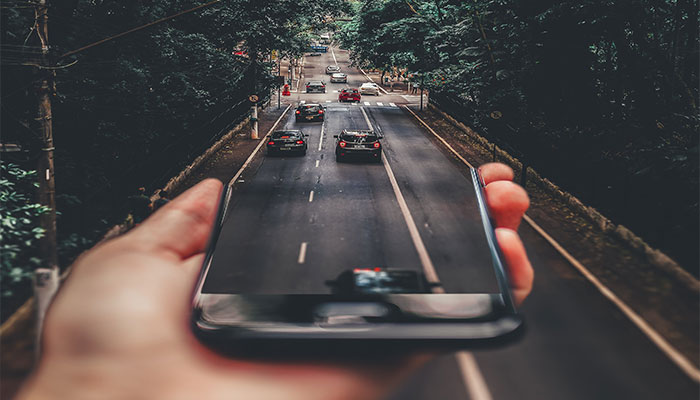In the constantly evolving realm of mobile app development, the user interface (UI) takes center stage, defining how users interact with and experience an app. With over 6.3 billion smartphone users worldwide, the appetite for sleek, user-friendly, and engaging app interfaces is insatiable. Keeping a finger on the pulse of the latest UI trends is crucial for developers and designers who aspire to stand out in a crowded marketplace. In this post, we’ll explore the emerging trends in mobile app user interface design poised to shape the user experience in 2023 and beyond.
Table of Contents
Trends in Mobile App User Interface Design:
Minimalism: Clarity in Simplicity
Minimalism continues to dominate the design landscape, emphasizing clean, uncluttered interfaces that prioritize simplicity. Modern apps are shedding complicated designs in favor of more straightforward layouts that enhance usability. The minimalist approach involves using negative space, subtle color palettes, and flat design to create an environment where content is king. This trend is not just about aesthetics; it impacts the app’s load times and overall performance, providing users with a swift and efficient experience.
Personalization: User-Centric Customization
Mobile apps are increasingly offering personalized experiences through customizable UIs. By leveraging data analytics and machine learning, apps can now adapt their interfaces to suit individual user preferences. Personalization can range from dynamic color themes and adjustable font sizes to intelligently predicting user actions. A tailored UI that reflects users’ habits and usage patterns can significantly enhance the user experience, leading to increased engagement and retention.
Voice-Enabled Interfaces: The Rise of Conversation
As voice recognition technology becomes more sophisticated, voice-enabled interfaces are becoming ubiquitous. Users are looking for hands-free interaction with their apps, and UI design is adapting accordingly. Integrating voice commands into the app’s interface allows for an inclusive and accessible design, ensuring users with disabilities or those who are multitasking can still enjoy the full app experience.
Dark Mode: Aesthetics Meets Eye Comfort
Dark mode has gone from a trend to a standard feature within UI design, and its advantages are two-fold: It offers a sleek, modern aesthetic and reduces eye strain in low-light environments. As users become more health-conscious, apps that provide dark mode are becoming preferable. This trend also contributes to battery saving on OLED and AMOLED screens, aligning with the broader shift towards energy efficiency.
Immersive Full-Screen Experiences: Beyond the Edge
With mobile devices now boasting edge-to-edge displays, apps are taking advantage of the real estate with full-screen experiences that immerse users. UI designers are doing away with traditional navigation bars and buttons, opting instead for swipe gestures and hidden menus that appear when needed. This not only maximizes content display but also creates a more engaging interaction as users feel more connected to the content.
Advanced Animations: More Than Eye-Candy
In the pursuit of captivating UIs, advanced animations are playing a crucial role. Animation is no longer just decorative but is used to enhance user interactions and provide feedback. From subtle micro-interactions that acknowledge user input to more complex motion graphics that guide users through an app, animations are making interfaces more intuitive and enjoyable.
Augmented Reality (AR) Integration: A New Dimension
While AR technology is no longer new, its integration into mobile app UI design is seeing a surge. AR can elevate the user interface by providing context-rich experiences using the device’s camera. From trying on clothes to visualizing furniture in a room, AR can give users a more informed and engaging interaction with the app.
Inclusivity and Accessibility: Design for All
Inclusivity in design ensures that apps are accessible to a wider audience, including those with disabilities. UI trends are shifting towards designs that account for color blindness, auditory impairments, and motor challenges. This includes high-contrast color schemes, voice navigation, and easy-to-hit touch targets. By prioritizing accessibility, apps not only adhere to legal standards but also open their doors to more users.
Neumorphism and Glassmorphism: Depth and Transparency
Neumorphism and Glassmorphism are two design trends that play with depth, shadows, and transparency. Neumorphism mimics real-life object textures and contours, creating soft, extruded designs that appear to emerge from the background. Glassmorphism, on the other hand, utilizes translucency and blur to emulate glass-like UI elements that seem to float over the interface. Both trends aim to add a tactile dimension to the digital experience.
Smart Swiping: Gesture-Based Navigation
The popularity of gesture-based navigation is escalating as screen sizes increase and one-handed usage becomes more challenging. Swiping actions can replace traditional tapping, reducing the need for buttons and simplifying the interface. Smart swiping gestures provide a natural and intuitive way to navigate through content, making them a cornerstone of modern mobile UI design.
Emphasis on Sustainability: Eco-Friendly Interfaces
As awareness about environmental issues elevates, mobile app UI design is also seeing a trend towards sustainability. Design choices such as dark mode, which saves battery life, or the use of recycled pixels, where the screen avoids displaying true black, aim to reduce energy consumption. Mobile app designs are increasingly taking into account their carbon footprint and the role they play in promoting sustainable user behavior.

SEO Considerations for Mobile App UI Design
For this blog post to be discovered by those interested in mobile app UI design trends, it’s essential to integrate SEO-friendly practices:
- Keyword Optimization: Utilize relevant keywords throughout the post, such as “mobile app UI design trends,” “minimalist design,” and “gesture-based navigation,” to improve search visibility.
- Engaging Title and Headings: Craft an intriguing title and use descriptive subheadings that incorporate primary keywords to capture user attention and aid skimming.
- Mobile-Friendly Content: Ensure the blog post is responsive and readable on mobile devices, aligning with the subject matter.
- Internal and External Links: Include links to other relevant posts and authoritative sources to improve the post’s credibility and SEO value.
- Meta Descriptions and Tags: Write a compelling meta description with focus keywords and use ALT tags for any images to improve accessibility and SEO.
Incorporating these trends into mobile app UI design requires a delicate balance between innovation and user-centric functionality. By staying ahead of the curve, designers can craft exceptional interfaces that not only meet the expectations of users but exceed them, providing a seamless and memorable app experience.


0 Comments